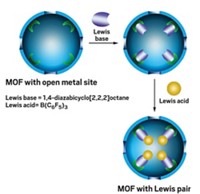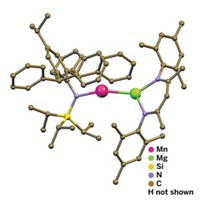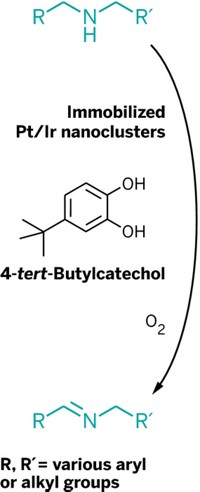Advertisement
Grab your lab coat. Let's get started
Welcome!
Welcome!
Create an account below to get 6 C&EN articles per month, receive newsletters and more - all free.
It seems this is your first time logging in online. Please enter the following information to continue.
As an ACS member you automatically get access to this site. All we need is few more details to create your reading experience.
Not you? Sign in with a different account.
Not you? Sign in with a different account.
ERROR 1
ERROR 1
ERROR 2
ERROR 2
ERROR 2
ERROR 2
ERROR 2
Password and Confirm password must match.
If you have an ACS member number, please enter it here so we can link this account to your membership. (optional)
ERROR 2
ACS values your privacy. By submitting your information, you are gaining access to C&EN and subscribing to our weekly newsletter. We use the information you provide to make your reading experience better, and we will never sell your data to third party members.
Synthesis
Caught By A Crystal
Materials Science: Fleeting intermediate observed in a porous coordination network
by Bethany Halford
October 1, 2009

An elusive hemiaminal intermediate—in which a hydroxyl and an amine are attached to the same carbon—has been observed by X-ray crystallography, thanks to a porous crystalline material that stabilizes the transient species (Nature 2009, 461, 633). The researchers who developed the crystalline trapping strategy say it could help chemists take snapshots of other fleeting intermediates.

Although scientists had previously glimpsed short-lived hemiaminals via X-ray analysis, they had to do so by using exceptional experimental methods, such as creating a mutant enzyme that traps the intermediate via kinetic stabilization.
To build a simpler trap for the hemiaminal, Makoto Fujita, Masaki Kawano, and colleagues at Japan's University of Tokyo employed porous crystalline coordination networks. They reasoned these "crystalline molecular flasks," as Fujita describes them, could sequester a substrate and allow it to undergo a reaction without decomposing the surrounding crystal.
Seth M. Cohen, a chemistry professor at the University of California, San Diego, likens the porous networks to climbing frames—organic ligands form the bars, and metal ions play the role of the rivets that hold the structure together. "The result is a grand structure that consists largely of empty space," Cohen writes in a commentary that accompanies the paper. "Just as children play within the lattice of a climbing frame, so molecules can diffuse and interact within the lattice of a coordination network."
The Tokyo researchers observed the hemiaminal by carrying out the reaction of an aldehyde and an amine at low temperature in an X-ray diffractometer. This way, X-ray "snapshots" could be taken at each stage. They first embedded 1-aminotriphenylene within the crystalline network of zinc ions and triazine derivatives. Next, acetaldehyde was diffused through the network to form the hemiaminal, which was kinetically trapped. Finally, raising the temperature allowed the reaction to proceed to its Schiff base product.
"We believe that porous coordination networks and the approach illustrated here offer a general method for acquiring sequential X-ray snapshots of chemical reactions, which will provide valuable direct mechanistic insights not obtainable by other means," Fujita says. The group plans to use the technique to explore organometallic transformations with unclear reaction mechanisms, as well as highly explosive and toxic substances that have not been well studied.
"This is a breakthrough, especially if it can be extended to other reactions that are currently under debate," comments J. N. H. (Joost) Reek, a supramolecular chemistry expert at the University of Amsterdam. "I can imagine that especially the area of transition metal catalysis would benefit from this if the strategy is amenable for transition metal complexes," he tells C&EN.





Join the conversation
Contact the reporter
Submit a Letter to the Editor for publication
Engage with us on Twitter